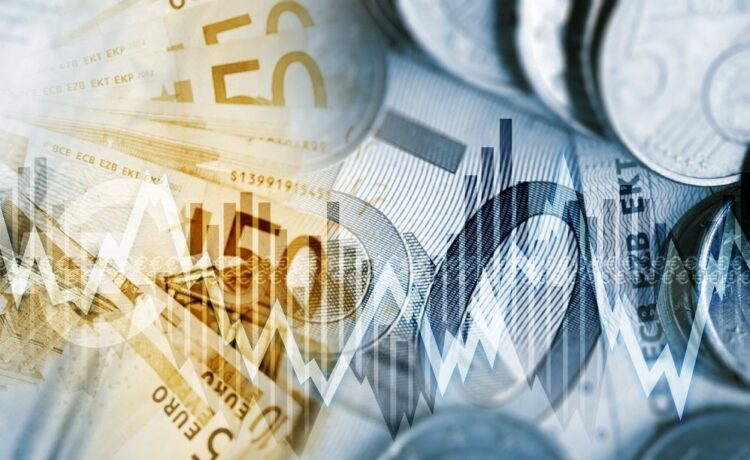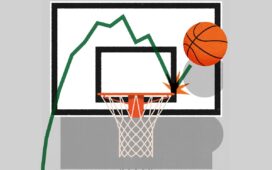When whole countries get cheap on earnings, cash flows, dividends, and asset values all at once, it’s rarely because every business suddenly lost its worth at the same time.
Instead, it’s because narratives travel faster than analysis.
That’s the setup today in a handful of markets that Meb Faber of The Idea Farm lists among the world’s cheapest: Austria, the UK, Portugal, Norway, and Singapore.
Each of these markets trades at a steep discount to global peers on a blend of long-term valuation metrics, and each houses income-producing, cash-rich companies that investors have been too quick to ignore.
Wall Street’s Elite Are Betting Big On These Stocks
What’s Wall Street buying right now? Benzinga Edge gives you instant access to ratings from 1,000 top analysts. From Goldman Sachs to Morgan Stanley and more—discover which stocks the smart money is piling into…and potentially profit alongside them. Unlock All Wall Street Stock Ratings
Austria: Cyclical Value Hidden In Plain Sight
Austria is a classic small, cyclical market that investors only love at the top of the cycle. The index is concentrated in banks, energy, industrials, and capital goods names that live and die by Europe’s capex cycle and Eastern European credit growth. When the headlines turn gloomy on Europe, the automatic response is to sell Austria. That’s how you end up with modest earnings multiples and sturdy dividend yields on companies that still control essential infrastructure, intermediate goods, and regional banking franchises.
Raiffeisen Bank International (OTC:RAIFY) is a perfect example. A universal bank with deep roots in Central and Eastern Europe, it has a deposit-rich funding base and a diversified earnings stream. The stock currently yields about 6%, with a recent dividend of €1.10 per share, and trades at a deep discount to tangible book. The geopolitical overhang from its Russian exposure still weighs on sentiment, but that’s where the opportunity lies. Any credible move toward de-escalation or resolution in Ukraine, or a successful sale or wind-down of its Russian unit, could trigger a sharp re-rating. Investors are effectively being paid to wait for peace.
The UK: Neglected Cash Flow At A Deep Discount
The UK sits at the intersection of neglect and cash flow. For years, the story has been “structural discount,” “London listings out of favor,” and “no growth.” Meanwhile, the UK trades on a steep valuation gap to the U.S., even after adjusting for sector mix, and it pays you to wait with a materially higher dividend yield. If productivity and investment improve from here, and there are signs of that, any cyclical uptick can ride a re-rating. It rarely pays to fight both cash yield and a 30% to 40% relative multiple discount when earnings momentum stabilizes.
Domino’s Pizza Group ADR (DPUKY) captures that story well. As the master franchisee for the UK and Ireland, it runs a highly digitalized delivery network and continues to expand unit count and profitability. Earnings have compounded steadily, share buybacks are ongoing, and the dividend yield sits around 2.5%. The combination of stable cash flow, aligned franchise incentives, and capital return makes this a quality compounder hiding in plain sight, and it’s still valued at a steep discount to its U.S. peers.
Portugal: Quiet Utility Value
Portugal is smaller and quieter, which is precisely why it gets overlooked. The listed market leans into utilities and energy: regulated or long-contracted cash flows with real asset backing. That structure keeps earnings steadier than the macro narrative suggests and supports respectable dividends, yet investors often write Portugal off as “low growth, low multiple” and move on. The math is friendlier than the stereotype. A concentrated index anchored by electricity and renewables platforms alongside an integrated energy champion can look boring at cocktail parties but very attractive inside a portfolio that values resilience and income.
Energias de Portugal SA (OTC:EDPFY) anchors that narrative. It’s a regulated utility and renewable energy platform with a balanced mix of domestic networks and international wind and solar projects. It pays an annual dividend of roughly €0.20 per share, yielding about 4.1% at current prices. Growth is driven by grid modernization, higher allowed returns from regulators, and continued expansion of renewables capacity through its subsidiary, EDP Renováveis. Investors get a stable payout and exposure to the energy transition at a fraction of U.S. renewable valuations.
Norway: More Than Just Oil
Norway wears the energy label so loudly that many investors stop listening after “oil.” That’s a mistake. Yes, the market is energy-heavy and geared to the commodity cycle, but it’s also supported by world-class operators, disciplined capital allocation, and a national balance sheet anchored by the world’s largest sovereign wealth fund. When oil volatility pushes public valuations down, you often inherit high free cash flow yields and generous distributions from companies that own irreplaceable offshore infrastructure and logistics. If you believe global power demand, shipping, and LNG remain tight through the build-out of the AI-era grid, Norway is one of the cheapest toll booths in the value chain.
MPC Container Ships ASA (OTC:MPZZF) fits the bill. The company owns and charters a fleet of feeder and mid-size container vessels, locking in long-term revenue through multi-year contracts. After distributing outsized special dividends during the post-COVID shipping boom, management reset the payout to 30% to 50% of net profit. The trailing yield now sits near 9%, and the business continues to generate high free cash flow as charter renewals roll in above historical averages. For yield-hungry investors, it’s a cyclical name with disciplined capital returns and significant optionality.
Singapore: The Bank-Led Cash Machine
Singapore is the bank-led cash machine the market routinely prices as if its advantages are temporary. In reality, the city-state’s three dominant banks sit on conservative underwriting, strong capital, and fee engines tied to trade, wealth management, and regional growth. Add in a deep REIT ecosystem with hard assets and long leases, and you get an equity market that quietly throws off income while compounding book value. The narrative says “mature, ex-growth.” The statements say “high return on equity, high dividend cover, and a policy bias toward stability.”
When the market prices stability at a discount, it’s telling you where to look for durable total return. The Singapore Exchange ADR (SPXCY) captures this ethos. It earns fees from trading, derivatives, FX, commodities, and listings. With trading volumes rebounding and a new multi-year plan to expand derivatives and currency markets, SGX is quietly compounding earnings. Management lifted the dividend to S$0.375 per share for FY2025, payable quarterly, which translates to a yield of about 3.5%. It’s not flashy, but it’s steady. Think of it as a toll booth on Asian capital flows.
The Common Thread
These five markets share the same DNA: strong cash generation, solid balance sheets, and stories that have gone cold with global investors. Sector mix plays a role. Banks, industrials, energy, and utilities naturally trade at lower multiples than tech. But that’s the opportunity. When the market prices these durable, cash-rich sectors at crisis valuations, future returns can be substantial.
For income-oriented investors, the combination of yield and valuation in Austria, the UK, Portugal, Norway, and Singapore represents exactly the kind of setup we like: stable cash flow, tangible assets, and a patient investor base waiting for sentiment to catch up to the fundamentals.
Why Global Value Makes Sense Now
After more than a decade of U.S. dominance, fueled by ultra-low rates, buybacks, and a narrow band of mega-cap growth leaders, the pendulum is overdue to swing back. The valuation gap between the U.S. and the rest of the world has stretched to extremes rarely seen in history. Today, investors can buy solid, dividend-paying, asset-backed businesses in Europe and Asia for half the multiple of their U.S. counterparts.
As the global cost of capital normalizes and inflation reshapes capital allocation, markets that actually pay investors to wait through yield, cash flow, and tangible value will likely lead the next cycle. Global value investing isn’t about betting against America. It’s about recognizing that compounding works best when you start from cheap prices and let time do the work.
Editorial content from our expert contributors is intended to be information for the general public and not individualized investment advice. Editors/contributors are presenting their individual opinions and strategies, which are neither expressly nor impliedly approved or endorsed by Benzinga.
Photo: Shutterstock




